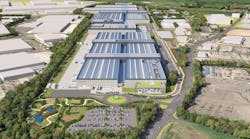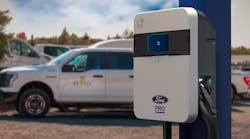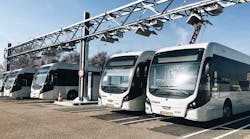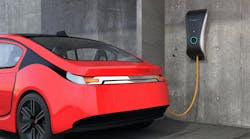The installation of electric vehicle charging stations may evolve into very good business for electrical distributors, their business partners and end users. But the recent issues in Chicago with cold-weather charging, the decisions by Ford to rethink its technology portfolio and bulk up its investment in hybrid vehicles over EVs prove and Tesla’s sluggish revenue outlook once again that you can’t force feed a new technology to customers.
There’s all kinds of good reasons that EVs will eventually produce nice revenues the electrical construction market and be a very viable fleet alternative for local service and delivery vehicles, but they first have to stand on their own as a more cost-effective transportation option over ICE (internal combustion engines).
On the Sunny Side of the Street
EVs will help reduce carbon emissions and contribute to the battle against climate change. While there’s some legitimate concerns about the mining practices involved with extracting lithium, cobalt and other minerals used in EV batteries, in sum total EVs will be good for the environment.
EV charging systems often require upgrades to existing service equipment or the installation of new or additional circuits. This will boost the sale of panelboards, circuit protection equipment, cabling, connectors and related electrical products.
The current local rebate programs offered by some electric utilities and state and local entities should continue to offset the cost of installation for end users. Leendert Jan Enthoven’s BriteSwitch is a terrific resource for tracking these programs.
Financial incentives from the Department of Energy (DOE) are driving R&D in EV battery development and charging systems. On Jan. 18, DOE announced more than $131 million for projects to advance research and development (R&D) in electric vehicle (EV) batteries and charging systems, and funding for a consortium to address critical priorities for the next phase of widescale EV commercialization.
Some Not-So-Positive Realities in the EV Market
EVs will sink or swim their own perceived benefits and bottom-dollar price competitiveness, not support from government subsidies. While federal or local financial incentives and utility rebates can help prime the pump for customer demand, in the long run EVs like any new technology have to live on their own merits and competitive price points. Mechanically, EVs have much to offer as a dependable transportation alternative that’s fun to drive and good for the environment. But so far, consumers are voting with their wallets and have shown they don’t want to pay a premium for EVs. The first EV manufacturer that can profitably deliver an EV with a sub-$30,000 sticker price may tap into a huge amount of customer demand.
The cold-weather charging issues that made national news are a real concern. Kyle Conner with Out of Spec Reviews, has as a good a take on the state of the nation’s EV charging network as anyone I have met (See video on the issue). He traveled to Chicago to research the problems with EV charging infrastructure in that area and found that while there were very definitely big problems with the charging infrastructure there, two major contributing factors were the fact that many EV owners were not preconditioning their batteries by warming them before a long trip and that rideshare drivers were not planning for the higher power consumption of EV batteries in cold weather or preconditioning their batteries.
While the issue EV drivers had in Chicago was an extreme example, it does show that the U.S. EV charging network is not yet quite ready for prime-time. Not everyone will have access to a Level 2 charger in their home, so public EV charging will be a necessity at apartment complexes, shopping centers, offices and other public spaces.
Major car manufacturers are cutting back on their EV investments. The most recent news is that Ford is rethinking it technology portfolio and is bulking up its hybrid vehicles over EVs. According to a Reuters report, the company plans to reduce production of its F-150 Lightning pickup truck at its Michigan Rouge Electric Vehicle Center to one shift starting April 1, as demand for electric vehicles (EVs) has been lower than expected. Additionally, in October, Ford announced that it would temporarily cut one of three shifts at a Michigan plant that builds the electric F-150 Lightning. And over at GM, in October the company postponed the opening of a $4 billion electric truck plant.
Tesla expects lower sales in 2024 and reports lower than-expected earnings in Q 4 2023. According to an AP News report, the company said its sales growth would be “notably lower” in 2024 and reported earnings of 71 cents per share instead of the 73 cents per share analysts expected, a -39% drop.
As I see it, the bottom line with the EV opportunity is that like any developing technology, the path to profits is seldom a straight line. You often first get an early surge of interest from the early adopters who jump into a new market opportunity early, followed by a quiet period as more conservative customers or investors evaluate the market opportunity. And as with any new technology, you have to cut through the hype that comes with new ideas.
That’s pretty much where we are with electric vehicles. Now is a good time to gather local market intelligence, so talk with electrical contractors and other buying influences to see what they are hearing about EVs. Every market local market is different, and in some regions of the country, like California and the Pacific Northwest, the acceptance of EVs is miles ahead of other areas where EV sales to date have not been very strong.










